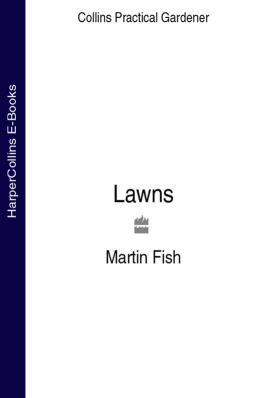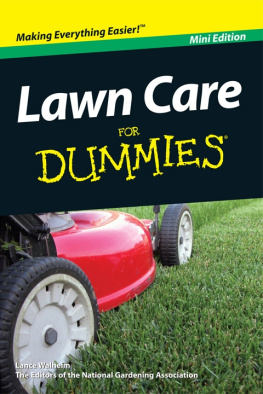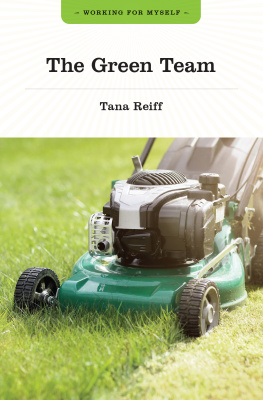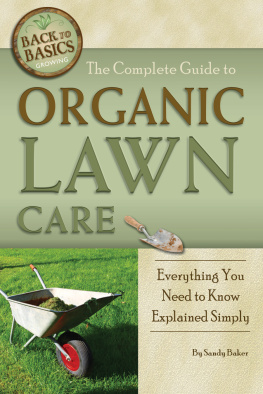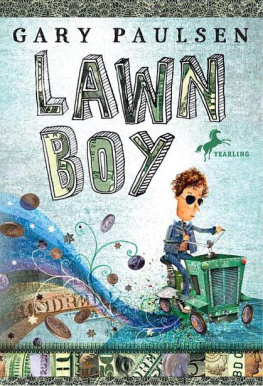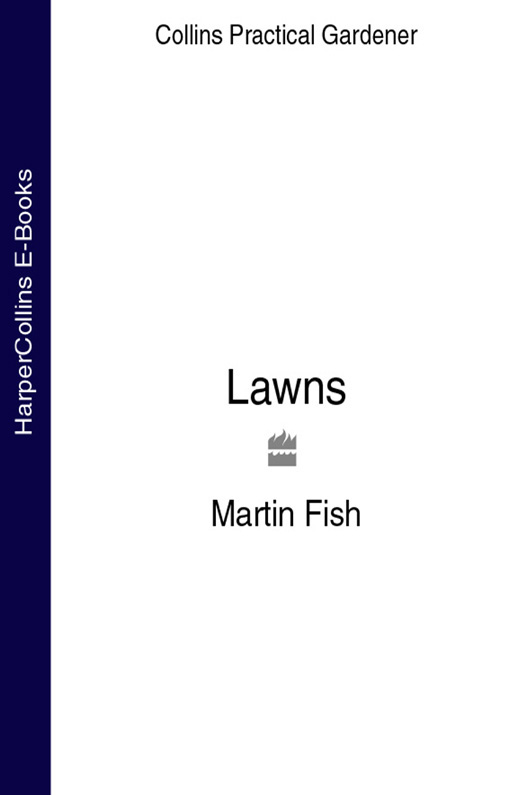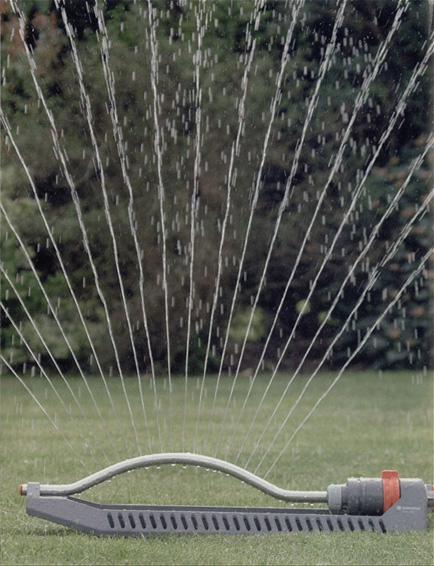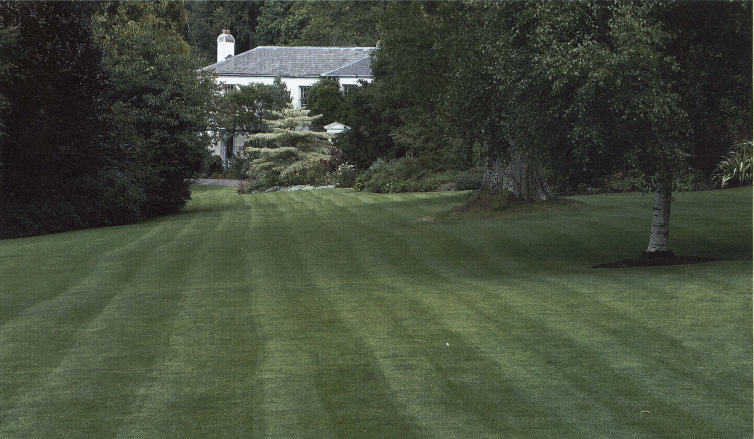Lawns come in all shapes and sizes, from manicured and striped lawns to tough hardwearing areas of grass. To many, looking after a lawn is a chore and is not considered very important. Yet from a garden design point of view, lawns are very important, and many people would not consider creating a garden without a lawn of some sort. Although gardening trends come and go, the lawn is definitely here to stay. It provides not only an attractive feature but a surface for play and an area in which to relax in the garden. It also acts as a foil to plants and borders take away the lawn and the garden would be much less interesting to look at. Even in the middle of winter when the garden can look a little bare, a lawn will always provide some colour.
Despite the importance of lawns, they are often taken for granted and only given the minimum of care. Part of the reason for this is because it is widely believed that to have a good quality lawn you need to spend a great deal of time and money on maintenance. In the case of a golf green or football pitch this may be the case, but for a garden lawn it is possible to create and maintain a lawn in good condition without being a slave to it. Lawn care is also thought to be difficult and a bit of a mystery, but with improved and new varieties of grass and an increasing range of lawn care products, lawn maintenance has never been as easy or enjoyable. A well kept lawn will involve some work, but the results far outweigh the effort and if you treat your lawn as being as important as the rest of the other features and plants in your garden, the whole area will appear to be more aesthetically pleasing to the eye.
This book is aimed at gardeners who appreciate that a lawn is an important part of the garden and for those who want to create a new lawn or maintain and improve an existing one. It is also for those who might want to try something a little different in their garden a break from tradition. Lawns can be used in many other ways such as for growing wild flowers, lawn sculptures and to create mown shapes to add interest and movement to the garden.
A well kept lawn is a thing of beauty and need not involve as much hard work as you might think
Lawns have been part of gardens for several hundreds of years, but initially they were only the preserve of those wealthy enough to afford the labour to mow them. If he had a garden at all, the working man would have used the land to grow vegetables, herbs and perhaps a few flowers.
Early lawns
Early lawns were very different to what we know today. Often, they were merely meadows that were occasionally grazed by animals to create areas of shorter grass around buildings. As gardening became more popular in Elizabethan times, lawns became more fashionable and were laid in large numbers around the many country homes that were built during this period. These lawns were either grazed or scythed and would contain a mixture of grasses and other plants such as chamomile that gave off a pleasant fragrance when walked upon. Indeed, the main purpose of many of these lawns was to provide a recreational facility, and scented plants were included to help mask the many unpleasant smells of the time. Short areas of grass were also maintained for the playing of sports such as bowls and pall-mall, which was later renamed croquet.
The invention of the mower
In the 18th century formal lawns became popular on large estates and in order to keep them short they would have been regularly cut with a scythe, sickle or hand shears. A skilled man with a scythe was able to cut the grass very short and even.
However, it was the invention of the first mechanical lawnmower that made lawns more accessible to the general public. An English engineer working in the textile trade based the first mower on a cutter used to trim cloth and in 1830 the idea was patented and the first mowers followed shortly afterwards, produced by a firm named Ransomes. This first mower had a cutting cylinder and needed to be operated by two men. One would pull and the other push. Soon to follow were smaller and lighter versions that could be used by one person and also larger models that were pulled by horses wearing leather shoes to prevent them from leaving hoof prints on the grass. These horse-drawn mowers were manufactured by a company called Shanks, and their product is thought to be behind the saying shanks pony, meaning to walk. Although the mowers were designed to be pulled by ponies, they were more often pulled by men! By the late 19th century lawns had become an established part of the garden, not only for the rich but also for the working man.
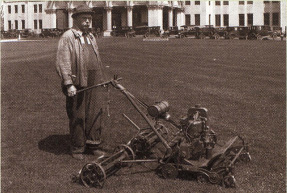
Early mowers were complex and heavy contraptions that often required more than one operator
Today, lawns are still very much part of the gardening scene, and thanks to the work carried out by various sporting organizations much of the expertise and technology has worked its way down to garden level. Because grass is so widely used as a sports surface, lawns should continue to flourish.
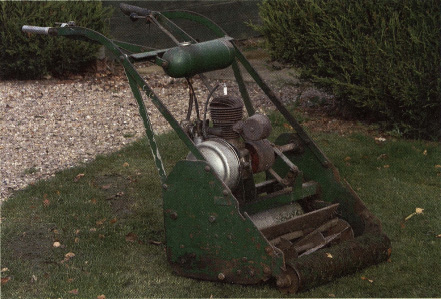
The design of the basic cylinder mower has changed very little over the years
Creating a new lawn from scratch is much easier than you might think and the end result will be very satisfying and rewarding. Lawns can be made from many different types of plants, but the most popular and practical lawn is one made from grass and usually mixtures of different grasses are used to create a thick sward.
Planning the Lawn
Before embarking on a new lawn, some planning should be done first. As you are starting to make a lawn from bare earth you have the option to decide exactly what you want. It really is worth thinking about the options because once the lawn is laid and established, to change it can be difficult. When laid properly, a lawn will last a lifetime, so it pays to try and get it right from the onset with minimum effort.
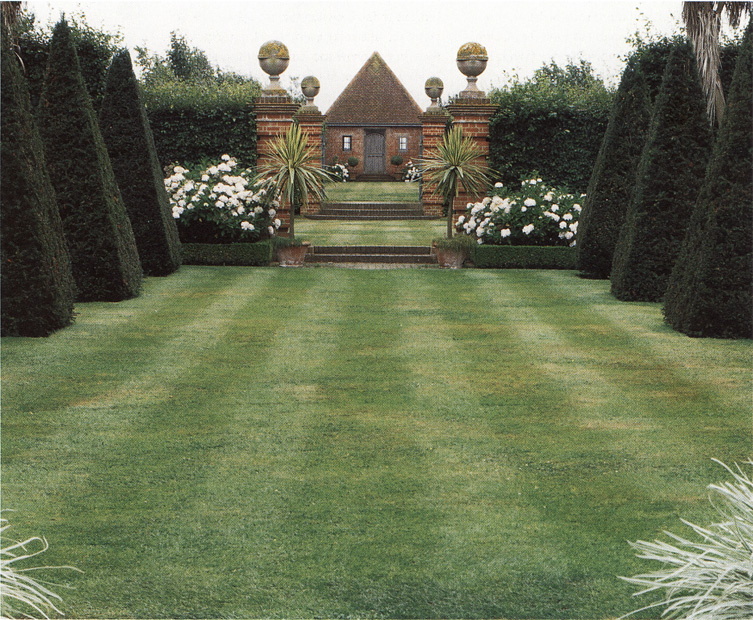
Here the lawn is the central feature in a garden full of interest
What will the lawn be used for? The main thing to take into account is what the new lawn is mainly going to be used for. It is all too easy to buy the first box of grass seed you find in a garden centre or to order turf from the first supplier you find listed in the telephone book, but before you get to that stage you need to ask yourself why do you want a lawn? Do you want a fine quality show lawn that will rarely be walked upon or a lawn that needs to be able to withstand children and pets running and playing on it? These are completely different types of lawn, and to create each successfully you need different grass mixtures. If you were to use a fine lawn mix and subject it to heavy wear, it would soon be ruined. Likewise, by using a strong grown seed mixture you will never get a fine quality lawn. It is, however, possible to have a hardwearing lawn that also looks good all year round, as long as you use the correct mix of grasses.

